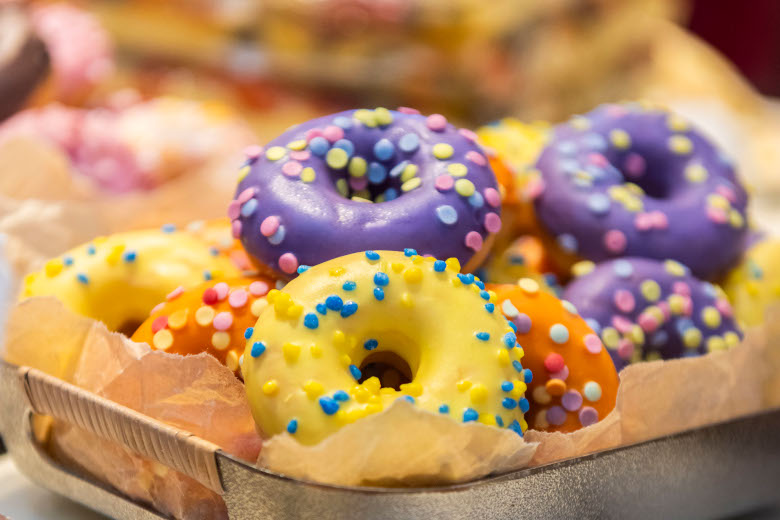
Food trends are one of the four focus topics at the trade fair in October, along with artisan bakery, digitalization and sustainability. Karin Tischer, the founder of food & more, highlighted the trends that are emerging around the world, which are reflected at the iba.FOOD TRENDS TOURS. Four food trends have emerged in 2023, the researcher highlights: digitalization, health orientation with indulgence, Food & Beverage trend booster, as well as sustainability.
- Digitalization is on the fast track, including robotics and online ordering and payment solutions. Innovative developments are particularly happening in the field of artificial intelligence (AI), such as in food waste, baking robots and new checkout systems with AI product recognition. Deliveries and ghost kitchens are increasing, due to more working from home, among other aspects. Digital communication has also changed a lot – customers see what they would like to have online, and then want to order and pay with their smartphones. Another idea is the staffless mini-bakery, like the Lila Bäcker in Neubrandenburg. A pick-up store is open 24/7: a vending machine where you can directly select the baked goods and pay cashless. These days, bakeries absolutely have to be active on social media, and signature products must be ‘Instagrammable’.
- Health with indulgence – People have become more health conscious. A broad majority of the population is opting for a more plant-based diet with less meat and fish as part of being more healthy. We speak here of “plantarism”. Customers expect more vegan and vegetarian alternatives. Tastes are also slowly changing, in a kind of silent revolution. With a plant-based diet, however, many miss the original taste of meat and co. Meeting consumers’ tastes is an even greater challenge than it was before.
- Food & Beverage trend booster: snacking, breakfast and street food are the megatrends. Breakfast is available around the clock without being restricted to mornings. Among other things, the egg is the center of attention here, because consumers love eggs and like to go out for breakfast. Whether it’s shakshuka, Turkish eggs or simply spread on bread – eggs offer great variety for breakfast and snacking. Plus there are also vegan and vegetarian alternatives. Large slices of lavishly topped and beautifully presented bread are also in vogue. Unusual drinks, like cheese tea originating from Asia: iced tea with whipped cream cheese, similar to a smoothie.
- Sustainability has become the DNA and image factor for numerous companies: sustainable, regional and fair concepts are successful. In particular, the attribute “from the region” is gaining in importance and overtaking “organic”. Consumers are also paying more attention to sustainability and short distances when it comes to packaging. Indoor farming has become more established: microgreens, herbs and lettuce are grown in a kind of mini-greenhouse directly in the restaurant – this also works in the bakery café. You can’t get much fresher than that!
All four trends can be seen worldwide, although the prioritization varies. Internationally, indulgence, new flavors and snacks are a big topic. When it comes to baked goods, Germany offers the largest variety of bread in the world and customers are also open to new things, from Italian focaccia to Asian bao buns. Home-made style Mediterranean pastries are mega trendy. In Germany, we have a very high level of baking expertise and also a large, transitioning breakfast culture. Young people in particular appreciate dishes like porridge, muesli bowls, granola and overnight oats. Coffee also has trend potential – such as Bumble Coffee, an espresso with fresh orange juice on ice. Or unusual, colorful drinks with superfoods, like lattes with matcha, beetroot or butterfly pea powder. “Coffeetails” are also popping up everywhere.
On every day of the fair (except Tuesday), Karin Tischer is leading a trend tour through the fair. Participants can observe a compact, short culinary tour that will give them an overview of the hottest food & beverage trends at iba. Six to seven exhibitors will be visited. A tour lasts about two hours (from 11 am to 1 pm) and is free of charge, for registered participants. A maximum of 20 participants can sign up.
Photo: GHM


